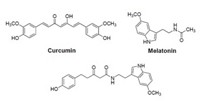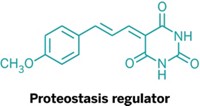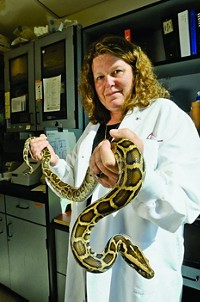Advertisement
Grab your lab coat. Let's get started
Welcome!
Welcome!
Create an account below to get 6 C&EN articles per month, receive newsletters and more - all free.
It seems this is your first time logging in online. Please enter the following information to continue.
As an ACS member you automatically get access to this site. All we need is few more details to create your reading experience.
Not you? Sign in with a different account.
Not you? Sign in with a different account.
ERROR 1
ERROR 1
ERROR 2
ERROR 2
ERROR 2
ERROR 2
ERROR 2
Password and Confirm password must match.
If you have an ACS member number, please enter it here so we can link this account to your membership. (optional)
ERROR 2
ACS values your privacy. By submitting your information, you are gaining access to C&EN and subscribing to our weekly newsletter. We use the information you provide to make your reading experience better, and we will never sell your data to third party members.
Biological Chemistry
The Ginkgo Tree's Chemical Charms
Aesthetically pleasing and medically useful, ginkgolides fascinate Koji Nakanishi
by Sophie L. Rovner
October 10, 2005
| A version of this story appeared in
Volume 83, Issue 41

ACS MEETING NEWS
Although it's known as a living fossil because it has changed so little in its more than 100 million-year history, the ginkgo tree is now at the leading edge of modern medicine. Products derived from the tree are being evaluated as dementia treatments and memory enhancers.
The chemical compounds responsible for the tree's biological activity have another positive feature in the eyes of Koji Nakanishi, who has spent years studying the tree and its chemical constituents. They are beautiful cage molecules, according to Columbia University's Centennial Professor of Chemistry. I like them aesthetically. The tree itself-with its distinctive fan-shaped leaves-is a familiar sight along roadways in the U.S. and elsewhere.
Nakanishi described his work with ginkgo trees and ginkgolides in an award address before the Division of Organic Chemistry at the recent American Chemical Society national meeting in Washington, D.C. He received the Tetrahedron Prize for Creativity in Organic Chemistry during a ceremony at the meeting. The $10,000 prize is sponsored by Elsevier.
As he recalled at the meeting and in a recent review article (Bioorg. Med. Chem. 2005, 13, 4987), Nakanishi began his work with ginkgo trees in 1963, when he was appointed as successor to Sinichiro Fujise, a chemistry professor at Tohoku University, Sendai, Japan. The following year, Nakanishi and his research team laboriously isolated several ginkgolides from the root bark of five typhoon-damaged ginkgo trees. Ginkgolides can also be found in the tree's leaves.
Lacking today's modern techniques, Nakanishi said, the researchers relied on a simple expedient to track the active compounds during purification: We followed the bitter taste with our tongues.
The ginkgolides' tendency to form mixed crystals impeded their purification. Nakanishi reveled in the challenge, however, describing it as the last classical and romantic structural study. By 1967, his research team had determined that several of the molecules, such as ginkgolide A, are shaped like baskets and consist of six fused five-membered rings, three of them lactones.
Shortly after Nakanishi joined the Columbia faculty in 1969, his group collaborated with the University of Heidelberg's Klaus Weinges and solved the structure of another ginkgo tree constituent, bilobalide. Today, the ginkgolides and bilobalide are known collectively as terpene trilactones (TTLs).
Over the years, Nakanishi's group has prepared many derivatives with rearranged cage skeletons, different solubilities in water and organic solvents, and a variety of substituents.
Nakanishi noted that ginkgolide molecules are incredibly stable. If you put them in nitric acid and boil off the acid, the ginkgolides are not damaged at all, he said. The molecules can form large clear or white crystals on the order of 2 cm in length. I think they would make good pendants, he joked.
The Chinese have used ginkgo-based compounds as medicinals for three millennia, and the leaf extracts have become the best-selling dietary supplement in the world, Nakanishi said. Although trials of the compounds have had mixed results, ginkgo extracts are reputed to improve blood circulation, enhance memory, and hold Alzheimer's disease and other forms of dementia at bay. Nakanishi hopes to provide evidence at the molecular level that TTLs can affect all of these processes.
How do TTLs work? It's a riddle, Nakanishi said. We know that ginkgolides go all over the body, but the metabolism is totally unknown.
Researchers have managed to piece together some details, however. For instance, ginkgo extracts are believed to improve blood flow by blocking receptors involved in blood clotting. Nakanishi's group has collaborated with University of Tokyo biochemistry professor Takao Shimizu to clarify this interaction.
Some researchers believe the compounds' neural activity is due in part to inhibition of phospholipase 2, which normally causes the death of neural cells. The compounds might also counteract age-related declines in binding of the neurotransmitter serotonin and in the number of adrenalin receptors in cerebral membranes.
Ginkgo extracts could alter expression of genes, including some involved in Alzheimer's disease. Also, Nakanishi's group has conducted in vitro studies with Emory University biomolecular chemistry professor David Lynn showing that the compounds interfere with amyloid- peptides believed to be responsible for Alzheimer's.
peptides believed to be responsible for Alzheimer's.
Working with Michael L. Shelanski-director of Columbia's Taub Institute on Alzheimer's Disease & the Aging Brain-Nakanishi has determined that TTLs can reverse the neurotoxic effects of amyloid- peptides on hippocampal neurons. The evidence is derived from assessments of long-term potentiation, a measure of memory and learning ability. The researchers are now conducting behavioral studies to see whether TTLs are as effective in vivo as they are in vitro.
peptides on hippocampal neurons. The evidence is derived from assessments of long-term potentiation, a measure of memory and learning ability. The researchers are now conducting behavioral studies to see whether TTLs are as effective in vivo as they are in vitro.
Clearly, Nakanishi's work is flourishing. As he put it in his review article, I am lucky, at age 80, to be able to continue research with superb colleagues.






Join the conversation
Contact the reporter
Submit a Letter to the Editor for publication
Engage with us on Twitter